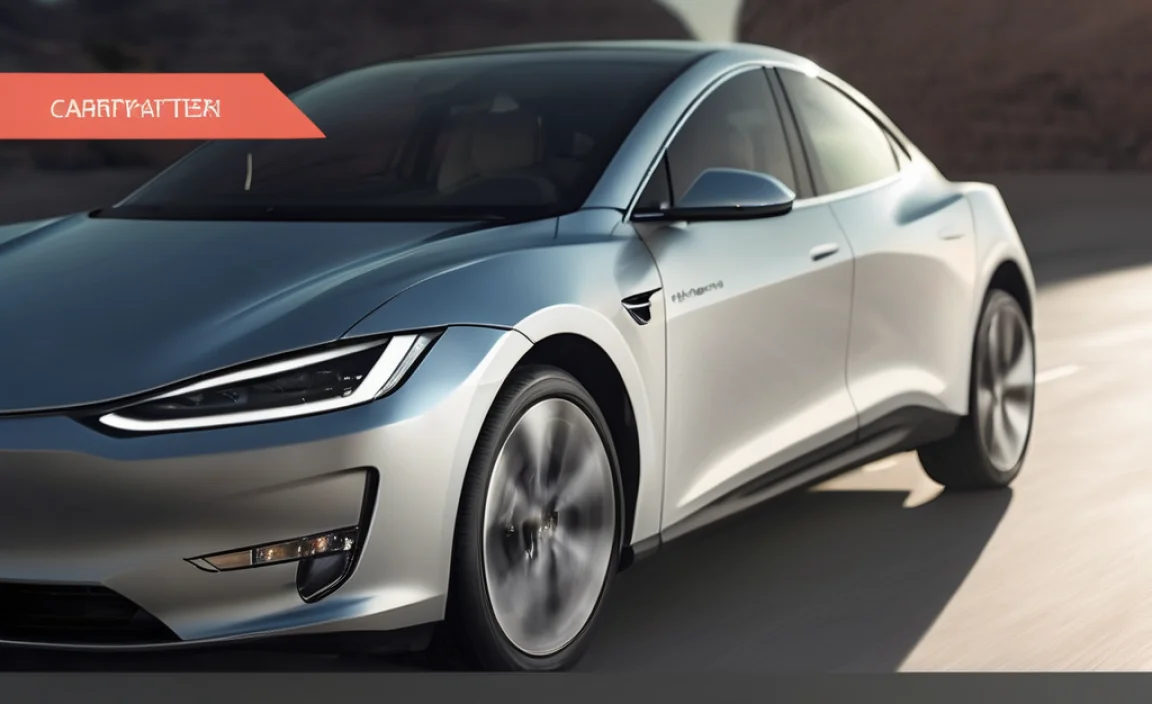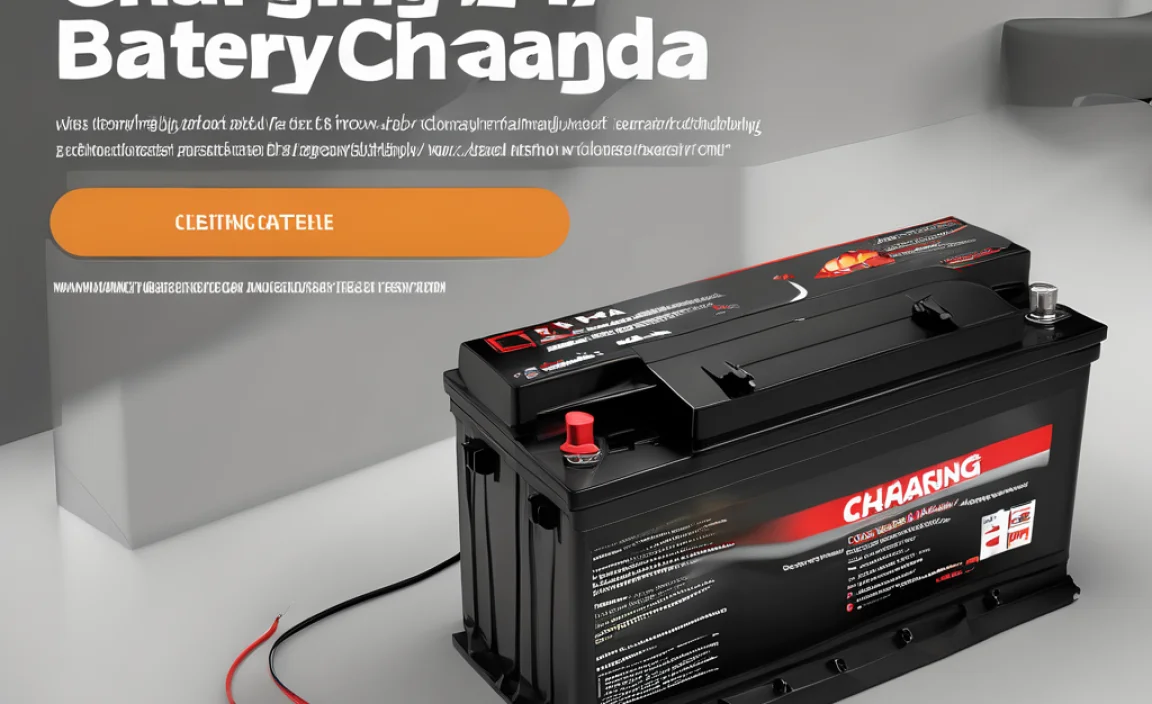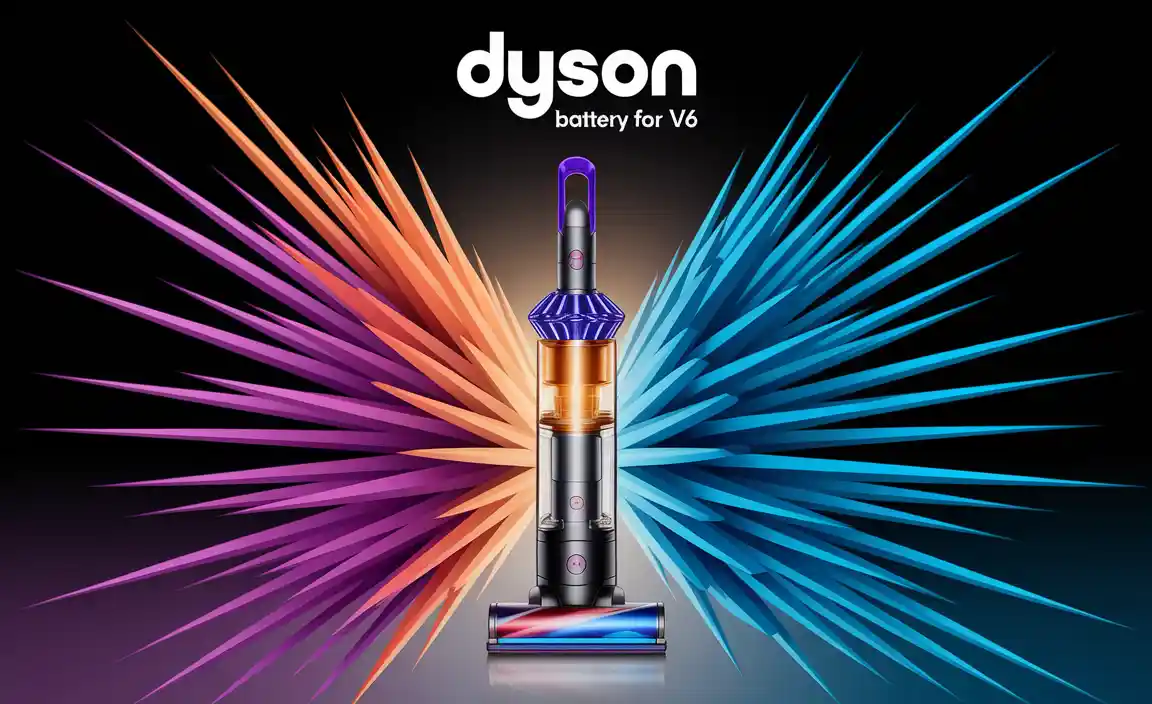Chicken water can freeze in winter, stopping them from drinking and leading to health issues. A battery-operated heated water bowl keeps water liquid, ensuring your flock stays hydrated and healthy all season long. It’s a simple, effective solution for cold weather.
Keeping your chickens hydrated is one of the most important jobs for any poultry keeper, no matter the weather. But when winter arrives and temperatures drop, a common and frustrating problem arises: frozen water. For chickens, this can mean dehydration, frostbite, and even stopping egg production. It sounds like a big problem, but thankfully, there’s a straightforward and reliable solution. We’re going to explore how a battery-operated heated water bowl can be an absolute game-changer for your flock during the cold months. It’s easier than you might think, and it ensures your feathered friends have access to fresh, unfrozen water, keeping them happy and healthy. Let’s dive into why this simple gadget is so essential.
Why Frozen Water is a Big Deal for Your Chickens
Chickens, like all living creatures, need a constant supply of fresh water to survive and thrive. Water is crucial for digestion, regulating body temperature, and almost every bodily function. When water freezes, chickens can’t drink it. This can quickly lead to dehydration, which has several negative effects:
- Reduced egg production: Layers need water to form eggs. Without it, their production will drop.
- Health problems: Dehydration weakens their immune system, making them more susceptible to illness.
- Thickened blood: This can put a strain on their heart and circulatory system.
- Reduced activity: Thirsty birds become lethargic, which can make them appear unwell.
- Frostbite: If they try to peck at ice, they can damage their combs and wattles.
Many people think that chickens can just peck at snow or ice, but this isn’t a reliable or sufficient source of hydration. Snow is dry and takes a lot of energy to melt in their bodies, and ice is too hard to break effectively. This is where a heated water bowl comes in, providing a constant source of liquid water.
Understanding Battery-Operated Heated Water Bowls
A battery-operated heated water bowl is designed specifically to prevent water from freezing in cold weather. Unlike traditional heated auto-fillers that plug into an electrical outlet, these models run on portable battery power. This makes them incredibly versatile.
Here’s a simple breakdown of how they work:
- Heating Element: A low-wattage heating element is built into the base of the bowl.
- Thermostat: A thermostat senses the water temperature. When the temperature drops to a pre-set point (usually just above freezing), it turns the heating element on. When the water warms up, it turns off.
- Battery Power: A rechargeable battery powers the heating element and thermostat. This means you don’t need to worry about electrical cords running outside in the cold, which can be a safety hazard and inconvenient.
The beauty of the battery operation is its portability and safety. You can place it anywhere in the coop or run, without needing to run extension cords or worry about the cord being chewed by other animals. The low power consumption means the battery can last for a significant amount of time on a single charge.
Key Features to Look For
When choosing a battery-operated heated water bowl, keep these features in mind:
- Battery Life: How long does the battery last on a full charge? This is crucial for keeping water thawed through the night or during extended cold spells. Look for models that offer at least 12-24 hours of heating on a single charge.
- Capacity: How much water does the bowl hold? Consider the size of your flock. A larger bowl means less frequent refilling.
- Material: Stainless steel is durable and easy to clean. Heavy-duty plastic can also work, but ensure it’s rated for cold temperatures and won’t become brittle.
- Thermostat Accuracy: A reliable thermostat is key to efficient operation and battery conservation.
- Ease of Cleaning: You’ll be cleaning this regularly, so make sure it’s easy to disassemble and wash.
- Durability: Chickens can be rough on their accessories. Look for a sturdy build that can withstand pecking and being knocked around.
- Charging Mechanism: Is it a simple USB-C charging port, or does it come with a proprietary charger? USB-C is generally more convenient.
Benefits of Using a Battery-Operated Heated Water Bowl
The advantages of using this type of heated water bowl are numerous:
- Prevents Freezing: This is the primary benefit, ensuring constant access to liquid water.
- Safe Operation: No electrical cords in potentially wet or muddy outdoor environments reduces the risk of electrical shorts or hazards.
- Portability: Place it anywhere – inside the coop, in the run, or even take it with you if you move the chickens.
- Peace of Mind: You don’t have to wake up before dawn to break ice or worry about your flock being thirsty while you’re away.
- Improved Flock Health: Consistent hydration leads to healthier chickens and continued egg production.
- Easy to Use: Most models are plug-and-play (or rather, charge-and-go).
How to Set Up and Use Your Heated Water Bowl
Getting your battery-operated heated water bowl ready for action is remarkably simple. It’s designed for ease of use, even for those who aren’t particularly handy.
Step 1: Charge the Battery
Before you can use your heated water bowl, the battery needs to be fully charged. Most units come with a USB cable that you can plug into any USB power adapter (like the one you use for your phone) or a portable power bank. Some might have a dedicated charger. Connect the cable to the bowl and plug it into a power source. The indicator light will usually show you when it’s charging and when it’s fully charged.
Tip: It’s a good idea to charge the battery fully overnight before the first use, especially if you anticipate cold weather soon.
Step 2: Fill with Water
Once the battery is charged, disconnect the charging cable. Fill the bowl with fresh, clean water. Don’t overfill it; leave a little space at the top. Use clean, ideally lukewarm, water to get the heating process started quicker, though cold water will also work.
Step 3: Place the Bowl Strategically
Find a suitable spot for the water bowl. Inside the coop is often best to protect it from direct wind and precipitation, which can cause water to freeze faster. If you place it in the run, try to find a sheltered spot. Ensure the bowl is on a stable, level surface so it won’t tip over. Chickens can be clumsy, and a tipped water bowl means a wet mess and no drinking water.
Safety Note: Avoid placing the bowl directly on bedding that could easily get wet. While it’s battery-operated and safer than corded versions, keeping bedding dry helps prevent mold and keeps the coop healthier.
Step 4: Turn it On (If Applicable)
Some models are fully automatic, turning on the heater only when the temperature drops. Others might have a simple on/off switch. If yours has a switch, ensure it’s in the “on” position. Refer to your product manual if you’re unsure.
Step 5: Monitor and Refill
Check the water level and temperature regularly, especially during prolonged cold snaps. You’ll want to ensure the battery is holding its charge and that the water isn’t freezing. Refill the bowl with fresh water as needed. When ambent temperatures rise above freezing, the heating element should automatically shut off, conserving battery life.
Maintenance and Cleaning
Regular cleaning is essential for any chicken waterer to prevent the growth of algae and nasty bacteria. Heated waterers are no different. In fact, because they’re keeping water thawed, they might be a more attractive environment for microbes if not cleaned diligently.
Regular Cleaning (Daily/Every Other Day)
- Empty any remaining water.
- Use a stiff brush (a dedicated one for the waterer is best) to scrub the inside of the bowl.
- Rinse thoroughly with clean water.
- Refill with fresh water.
Deep Cleaning (Weekly)
- Disassemble the bowl if possible. Most battery-operated models are designed to be easy to take apart.
- Soak the bowl and any removable parts in a solution of one part vinegar to four parts water for about 30 minutes.
- Scrub thoroughly with a brush.
- Rinse exceptionally well to remove all traces of vinegar.
- Allow parts to air dry completely before reassembling.
- Ensure the battery compartment and charging port are clean and dry.
Important: Always ensure the unit is unplugged from its charger and turned off before cleaning.
Troubleshooting Common Issues
Even with the best equipment, you might run into a hiccup now and then. Here are a few common issues and how to fix them:
Issue: Water is still freezing.
- Possible Cause: Battery not fully charged or depleted.
- Solution: Recharge the battery completely. Check the indicator light to confirm it’s charging.
- Possible Cause: Extremely cold temperatures taxing the heater.
- Solution: Place the bowl in a more sheltered location, away from wind. Consider insulating the outside of the bowl (ensure no obstruction of the heating element or thermostat).
- Possible Cause: Thermostat not functioning correctly.
- Solution: Contact the manufacturer for support or consider replacement.
- Possible Cause: The bowl is too large for its heating capacity.
- Solution: For very large flocks or extreme cold, you might need a larger capacity heated waterer or multiple units.
Issue: Battery drains too quickly.
- Possible Cause: Frequent charging cycles due to extreme cold.
- Solution: Ensure the bowl is in a sheltered spot. Refill with warmer water to reduce the heating element’s workload.
- Possible Cause: Battery is old or faulty.
- Solution: Batteries have a lifespan. If the unit is old, the battery may need replacing (if possible) or the unit may need to be replaced.
- Possible Cause: Heater is constantly running.
- Solution: Check if the thermostat is functioning – is it turning off when the water is warm? If not, it might be faulty.
Issue: Bowl is not heating at all.
- Possible Cause: Battery completely dead.
- Solution: Charge the battery fully.
- Possible Cause: Unit is switched off or not properly connected.
- Solution: Check any power switches and ensure everything is connected correctly (if applicable).
- Possible Cause: Internal fault.
- Solution: Contact the manufacturer for troubleshooting or replacement.
Battery-Powered vs. Corded Heated Waterers
It’s helpful to understand the differences between the two main types of heated waterers to decide which is best for your situation.
| Feature | Battery-Operated Heated Water Bowl | Corded Heated Waterer/Base |
|---|---|---|
| Power Source | Rechargeable internal battery | Mains electricity (AC power) |
| Portability | Very high. Can be placed anywhere. | Limited by cord length and proximity to an outlet. |
| Safety (Outdoor Use) | High. No exposed cords to chew or short out. | Lower risk if GFCI protected, but still a concern with cords. |
| Initial Cost | Can be higher due to battery and charging tech. | Often lower initially. |
| Ongoing Cost | Charging electricity is minimal. Battery replacement eventually needed. | Electricity consumption. Potential for cord repair/replacement. |
| Ease of Setup | Simple charge and go. | Requires finding an outdoor-rated outlet and managing the cord. |
| Best For | Flocks in runs without easy power access, mobile coops, multi-location needs, prioritizing simplicity and cord-free safety. | Permanent coop locations with reliable outdoor power, larger flocks where continuous heating is paramount and battery life is not a consideration. |
For many backyard keepers, the convenience and safety of a battery-operated model make it the preferred choice, especially for smaller to medium-sized flocks. The initial investment can be offset by the simplicity and reduced worry.
Alternative Solutions for Frozen Water
While battery-operated heated water bowls are excellent, they aren’t the only way to combat frozen water. Here are a few other options:
- Heated Bases: These are flat pads that you place under a regular waterer. The pad heats up, keeping the water from freezing. They usually need to be plugged in. Popular brands include Farm Innovators and Cozy Coop. You can find reliable outdoor-rated extension cords and weather-resistant connections if you go this route.
- Heated Waterers: These are waterers with a built-in heating element at the base that requires a cord to plug into an outlet. Brands like Little Giant and Ritchie offer robust options.
- Daily Ice Breaking: This is the most labor-intensive method. Twice a day (or more), you’ll need to go out and break the ice from their water. You can use a small shovel or a sturdy stick for this.
- Water Games: Some people have success with “water games.” This involves giving the chickens a very large, shallow bin of water just before bedtime. The large surface area means it takes longer for the water to freeze solid, and they can drink the liquid portion overnight. This is a temporary fix and not ideal for extended deep freezes.
- Insulation: Insulating existing waterers can help slow down the freezing process, but it won’t prevent it entirely in freezing temperatures.
Each method has its pros and cons. Battery-powered heated water bowls offer a great balance of effectiveness, safety, and convenience, especially when direct power is unavailable or a hassle.
Safety Considerations
While battery-operated heated water bowls are generally safer than their corded counterparts, a few safety points are worth noting:
- Use Only as Directed: Always follow the manufacturer’s instructions for assembly, charging, and operation.
- Keep Battery Compartment Dry: While the bowl itself is designed to hold water, the battery compartment and charging port should be kept dry to prevent damage or malfunction.
- Regular Inspection: Periodically check the bowl, battery, and charger for any signs of damage (cracks, frayed wires, corrosion). If you find any damage, discontinue use and contact the manufacturer.
- Appropriate Water Temperature: These bowls are designed to keep water from freezing, not to heat it to a scalding temperature. The goal is liquid water, not warm bathwater.
- Supervise Initial Use: The first few days with a new gadget are always a good time for extra observation to ensure it’s working as expected and your chickens are using it.
Safety is paramount when dealing with any electrical device, even those powered by batteries. By being mindful and following basic precautions, you can ensure your heated water bowl works effectively and safely.
Environmental Impact and Battery Care
When we talk about battery-operated devices, it’s good to be mindful of their environmental footprint. While a single heated water bowl has a minimal impact, battery technology is constantly evolving.
- Rechargeable Batteries: These are far more environmentally friendly than disposable batteries, as they can be recharged and reused hundreds, if not thousands, of times.
- Battery Lifespan: Like all rechargeable batteries, the ones in your water bowl will eventually degrade. Most manufacturers design these for several years of use. When a battery reaches the end of its life, check if the manufacturer offers a recycling program or if you can take it to a local e-waste recycling center. Many local authorities have dedicated facilities for battery disposal and recycling. You can often find information on battery recycling from your local government’s waste management website, or resources like Call2Recycle in North America.
- Energy Efficiency: Modern heating elements and thermostats are quite efficient. They only draw power when necessary to prevent freezing, which conserves energy and extends battery life.
Proper battery care, such as not leaving it plugged in indefinitely after a full charge (unless the charger is designed for trickle charging) and avoiding extreme temperatures when not in use, can help prolong its lifespan. Think of it like charging




